Fällkniven S1x Expert Review
De Fällkniven X-serie is one of the most impressive releases of 2019. But are these new full tang survival knives really that good? Padraig Croke wrote us this Fällkniven S1x review. For this he tested and used the Fällkniven S1xb.
Breaking the Rules
What do you think of when somebody says a survival knife? Do you picture an 8 inch chunk of carbon steel? Scalloped micarta scales, Serrated edges and oversized jimping? That’s usually what springs to my mind when I hear the term. Oversized and chunky, and fit to split an oak table in half, but lacking in finesse or nuance. Enter Fällkniven… the knife company whose job it is to design survival tools for some of the most badass men and women on the planet… specifically, Swedish fighter pilots. Their knives are about as removed from the look of a survival knife as you can imagine, at first glance at least. But underneath this cool and calm appearance is a tool ready to tackle an army.
There is a Swedish term known as Lagom. Loosely, it translates to ‘just the right amount’, or ‘perfectly simple’. However, it goes much deeper than that. It’s a concept embedded deep in the Swedish psyche, and has been the basis for many a company’s philosophy. It may be a bold statement to suggest that Fällknivens S1X is just that. Lagom. A balance of understated finesse and ‘just-right’ elegance, it could easily be overlooked amongst a lineup of other knives in this category. But rest assured that there isn’t an inch of this tool that has been overlooked.
A message from Fällkniven
“Your X-knife is the strongest, sharpest and safest stainless steel knife in production. If your life is in danger, you can always rely on your X-knife. It is designed to withstand all the stresses applied by the human hand, which means that it is virtually indestructible…We won’t be surprised if people start recognizing the X-knife as the world’s most thoroughly thought-out knife concept where no corner has been cut, nothing spared, to bring out the very best from an ergonomic and safety point of view…”
When I read this, I was admittedly skeptical of such a bold statement. But one should be quick to remember that Fällkniven have in some ways earned the right to be able to make such a claim. For one, they supply the Swedish military! The Fällkniven model F1 has been the official survival knife for pilots in the Swedish Air Force since 1995, and their models F1 and S1 are approved for U.S. Navy and U.S. Marine air crews.
Secondly, they test their knives in independent university lab studies, in order to ensure that their knives are as strong as they can possibly be. These tests are available to view on their website. Honestly, after these accolades, we are simply talking about a knife that either we like or we do not like. There is no debate on quality here. So let’s get into the details.
The Specs and Steel
The steel is a laminate cobalt steel (CoS) center and 420J2 (a steel used in the making of surgical implements due to its sharpness) on the outer layers. The result is a knife that will have an extremely sharp cutting edge and a tough-as-nails core.
With an overall length of 249mm, of which is a blade of 132mm long and 6mm thick, the S1X’s blade is hefty! By comparison, a KA-BAR Becker BK2 is 270mm long with a blade 133mm and 6.6 mm thick. Surprisingly, the length and thickness are actually quite similar when you’re talking working steel. However, I feel that there are a number of factors at play with the Fällkniven that adds a certain finesse and attention to detail, not to mention the steel quality. This creates somewhat of a distance between it and other survival blades on the market, usually made from 1095 steel.
When I have (reluctantly) handed the S1X to people to fondle, the first thing they all seem to say with a surprised vivacity is “whoa the weight of it!”. To look at this blade, you would never think it would weigh what it does. This weight for me certainly instills a confidence in the blade when I’m trusting it to get a job done. Combined with this, I know that the research and development gone into this tool means that they have virtually eliminated all stress and break points that could possibly be placed on it with human strength. This Cobalt laminate tool will not fail. Full stop. On their website Fällkniven state: ‘We’re using a laminate steel because such a steel is at least 20% stronger than a solid stainless steel. Designing a survival knife you always have to consider the strength of the knife since you might be forced to use the knife beyond standards.’
But a heavy knife does not equal a good knife. What’s important is balance. Unlike the original S1Pro, the S1X is a full tang blade, adding about another 50 grams in overall weight. The additional weight is only welcomed as far as I am concerned. The convex edge, combined with the distal tapering of the tip shaves off a lot of the weight in the cutting edge and creates a beautifully balanced tool. The weight under the handles and in your hand gives you a solid chunk to work with, while the blade itself feels significant, but never unwieldy. As well as this, the tapering makes the blade much more nimble for performing more intricate tasks and allows for unparalleled indexing. The knife is well-balanced so that it goes where you want it to and cuts how you want it to when you want it to.
One thing it will not do however is catch a spark from the spine using a piece of flint. This is due to the fact that the steel is stainless and has very little carbon in it. On top of this, the tungsten coating will not allow it. Personally I have only used this technique for demonstration purposes in the past, and have never had to actually RELY on it. If you do, you are woefully ill-prepared in the first place! But it is worth noting that it will not work. Is this a deal breaker in a survival knife? I don’t think so, but it may not sit well with some people. I would rather that steel be resistant to the elements than to be able to catch a spark, but you must weigh these pros and cons yourself.
Your Knife in a Survival Situation
If you were ever flying your F-117 Nighthawk stealth aircraft and you got shot down (it has happened) you would find yourself in what would be considered a survival situation. In such a situation everything you have on you is a finite resource. Your lighter can run out of fuel. Your water and food will eventually run out, and the battery in your radio will die. But what a lot of people don’t think about is your blade running out! Or more specifically, your edge dulling with use.
Of course I use this example as a tongue-in-cheek scenario. My fighter jet will never get shot down. But if it did, I would be conscious to save my knifes edge only for absolutely necessary tasks. I know it seems counter intuitive to test a knife claiming to be survival tool in this way, but this is what I did. I imagined a scenario where I had to process a lot of wood using only my knife to create a fire that would keep me warm throughout the night. For this I would need fine material to light, and large chunks to keep the fire going. I decided that the best way to maximize my blade as a resource would be to construct a mallet and a few wedges in order to split large wood. After that, I would only use the spine of my knife to process fat wood as a tinder source and scrape my ferro rod. And lastly, I would use the cutting edge to create some feather sticks to get the fire going.
The construction of the mallet and wedges would be the most intensive part of this task, and involved batoning both cross grain and down grain. The convex edge on the S1X is not the best type of grind to perform this task, and I would prefer a scandi edge. That being said, it was perfectly capable, and never did I feel as though I was pushing the knife beyond its limits. One of the main reasons why I chose the larger S1X specifically as a survival tool (not a bushcraft blade!) was the fact that it is a five inch blade, as opposed to the F1X which is only a four inch, although I’m positive the F1X is just as capable a blade. A four inch log is considered a good usable size in the woods. From construction of shelters to the building of tools and camp furniture, a four inch thick log is the perfect rule of thumb. This means the additional inch of steel gives me more knife to play with when processing large wood such as this for creating a mallet. Chopping and splitting the mallet was rough, as I simply wanted a tool that would get the job done. The balance and weight makes chopping tasks quite easy also, and the handle long enough to get good swinging power to the edge.
Processing fat wood by using the 90 degree spine is a breeze, as would be expected, and striking a ferro rod will create a substantial shower of sparks.
The Fällkniven S1x Sheath
This is the first FäIlkniven I have owned, so I cannot pertain to be able to speak about the sheath from an ‘improvements’ point of view. That being said, claims that upgrades have been made from the original S1 Pro sheath have been uttered by both online forums and Fällkniven themselves. Personally I love the sheath. It is slim, discreet and tidy, easily sitting on your belt without drawing much attention at all. Made from Zytel, a very hard and impact-resistant material of fiberglass reinforced nylon. The material is strong and stiff, and according to Fällkniven, resistant to abrasion, does not conduct electricity and can withstand virtually all conceivable chemicals and solvents.
On top of the old click fit system, an additional lock system has been implemented to replace the snap button on the S1 Pro sheath. It makes the knife virtually impossible to dislodge accidentally. This ‘belt and braces approach’ as Fällkniven call it, means that if you are taking your knife in and out of its sheath a lot while working, then simply clicking the blade in will be enough to secure it. However, if you wanted to be absolutely sure you didn’t want it to come loose, or if you wanted to mount it upside down on your backpack strap, then you can be assured that it will be safe with the additional lock in place.
Another additional feature is side holes. If you wanted to mount the sheath high on your belt, or if the nylon strap somehow broke, you could still hold your cutting tool safely and securely on your person. All in all, this sheath is deceptively simple, yet very well thought out. Much like the rest of this knife, it’s everything it needs to be. Lagom.
Tungsten Carbide Coating
There are two finish options of either satin and black tungsten carbide on the X series. Tungsten carbide (WC) is a chemical compound containing equal parts of tungsten and carbon. In its most basic form, tungsten carbide is a fine grey powder, but it can be pressed and formed into shapes through a process called sintering for use in tool bits and industrial machinery.
The coated versions have one of the hardest coatings available with a surface hardness of 83HRC! This is about the best blade coat available. It does look very nice aesthetically, giving an appearance more like a deep cold blueing than say something you might expect of an ESEE powder coating, meaning your blade will still work with striking a ferro rod off the spine, which is shaped with an extremely effective 90degree edge.
All that being said, honestly I don’t see any huge benefit of carrying a knife with this coating. Yes it is 100% going to prevent your blade from scratches and cosmetic defects or rusting from damp or salty environments, but at the cost of having a blade that is difficult to sharpen. Also, not that it’s a huge dealbreaker, but the coating also shows up oils and fingerprints, and can be difficult to remove until you give it a hard clean.
Sharpening this blade will require a high grade silicon carbide wet and dry sandpaper with a hardness of about 2600 Vickers on a semi firm surface such as a foam mouse mat. Silicon carbide is harder than tungsten carbide. Alternatively, diamond coated sandpaper could be used, which is easy enough to find online and is not too expensive. Of course in a survival situation, you would never be able to sharpen in the field unless you also carried this sandpaper. A ceramic stone would be able to sharpen it also, but over time, with ceramic being such a hard surface, there is a risk of damaging the convex grind. This would take a long time of course, but my advice would be, if you can’t see an immediate reason as to why you would need to protect your blade with this coating, then I would opt for the satin finish.
It should be noted that Fällkniven do offer a re-profiling and sharpening service for just 85 Swedish Kronor. That’s about €10! (Only available directly through Fällkniven)
The Scales
Some people may find the handles on this knife thinner than they are used to. As we all know, knife handles are such a subjective thing, and have to take into account hand sizes and shapes. The handles on most Fällkniven knives in the S series are designed with fighter pilots in mind, for use while wearing flight gloves. That being said, we have very subtle curves and shapes happening here. I would find it hard to believe that any hand type could be offended by the S1X’s handle profile. As well as this, considering we are also dealing with the 6mm thick full tang blade between the scales. I have been using this blade exclusively for months on all my trips and courses, and I personally found the grip perfect. The thermorun with its rubber-like properties feels grippy and comfortable as well.
Another nice feature is the fact that the scales are removable! This would allow for, if you so wanted, to replace them with different materials or thickness, and allow for cleaning if the S1x was used for game processing for example.
Thermorun is a beautiful choice for survival knife scales. By their nature, survival knives should be designed to withstand particularly harsh conditions, and thermorun is quite insensitive to heat ageing, water, weather, chemicals / solvents in general, ozone and DEET, the latter include mosquito repellent, notorious for dissolving even plastics.
Finer tasking
As I have talked about above, the S1X is a brutal piece of steel, with a spine perfect for tasks like shaving fat wood and birch bark, as well as for use with a firesteel. However, I was genuinely surprised at how good the Fällkniven S1X is at handling finer tasks such as notches and simple carving tasks. The distal taper of the blade, as mentioned before, gives it, not just superior indexing, but also allows it to be so unbelievable nimble. The likes of which I have yet to find on any bushcraft knife even, let alone a survival blade. It almost handles like a carving knife. Here, I sample a few simple notches to demonstrate this.
The Ultimate Survival Blade?
So is it the best survival knife ever made, as they claim? Time will tell. Survival being the key word here, Fällkniven seem very confident in this knifes mechanics and performance, judging by the blurb for it on their website. Confidence aside, the fact remains that a serious amount of thinking has gone into it.
The reality is that more often than not, we think, not with our rational minds, but our emotions. We form an emotional attachment to physical objects and associate ourselves with the products we buy or choose to carry. This is the basic principal of consumer marketing and product design. Simply put… will you like this knife, and would you pay this much for it? That is always going to be a personal preference.
Overpriced? The argument could be made that any knife company using CoS steel are charging just as much for their blades. Expensive? absolutely… but that’s not the same thing as overpriced.
Some people may not find this knife visually interesting or compelling. My argument would be that it never tries to be visually interesting, although personally I think it’s a stunning piece of design. This is a tool that has been designed to serve a purpose, that is, for fighter pilots and soldiers in survival situations. Would I trust this knife if my life depended on it? Well I will let you know when my plane gets shot down!
Padraig Croke
Padraig Croke is the host of the outdoors podcast Trial by Fire, which ran from 2018-2023. A graphic designer and photographer by day, as well as an avid outdoorsman and bushcraft enthusiast, when he's not writing for us he's usually out in the field making film or taking photographs.

You can find his work at www.padraig.me or by following him on instagram @padraigcroke
Thanks, Padraig, for this awesome review!
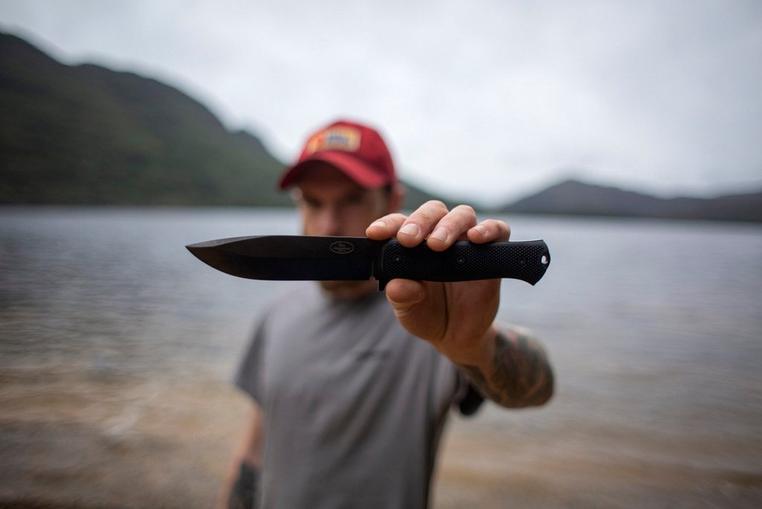
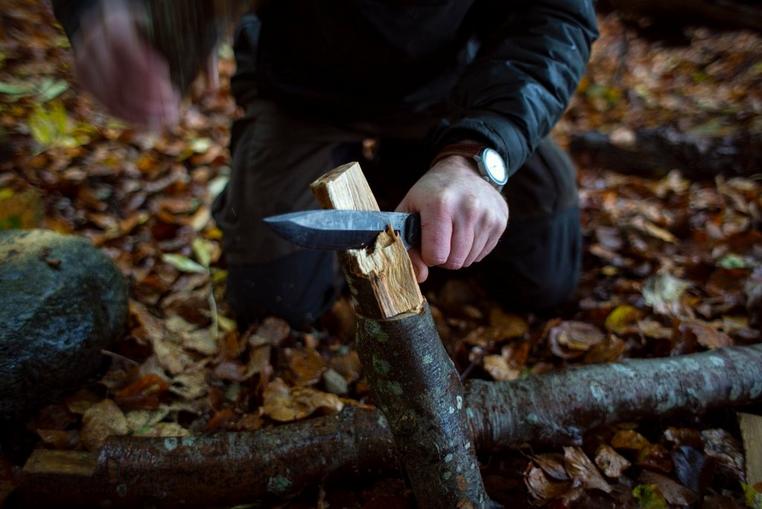
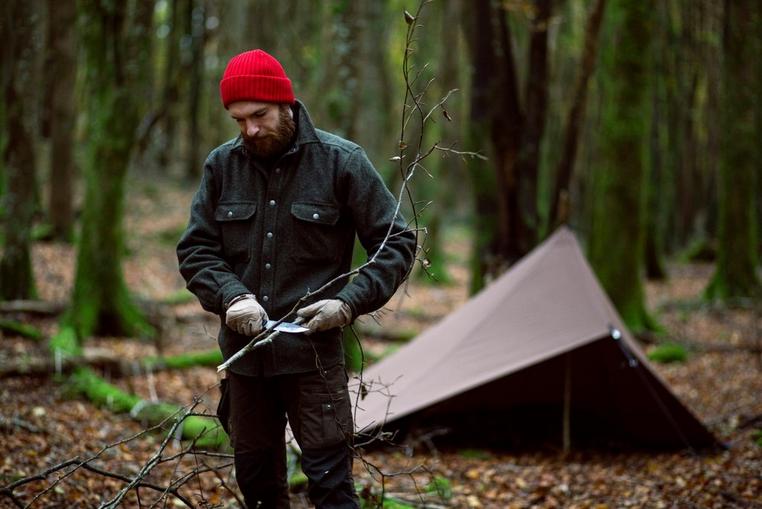

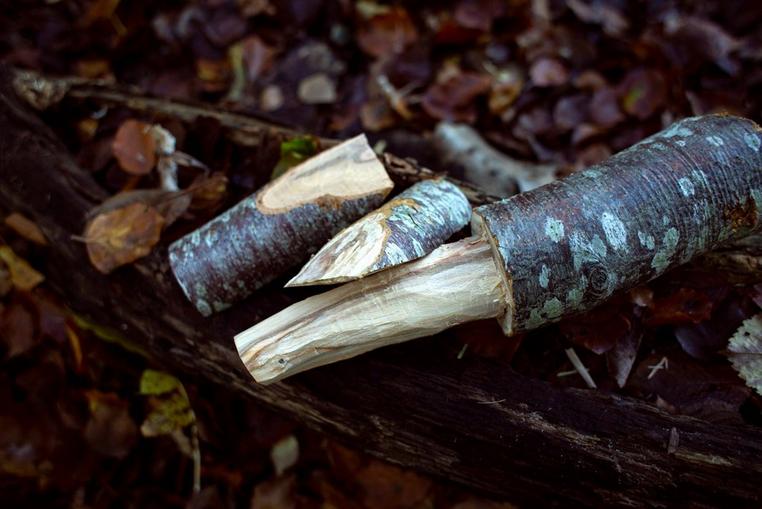
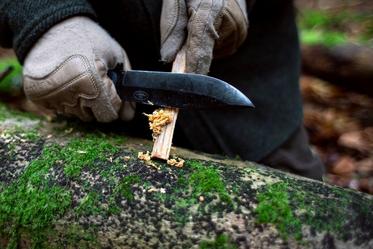
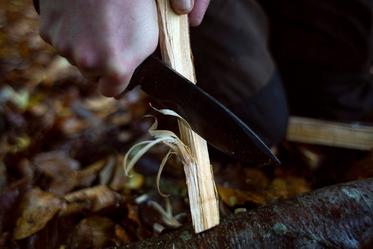
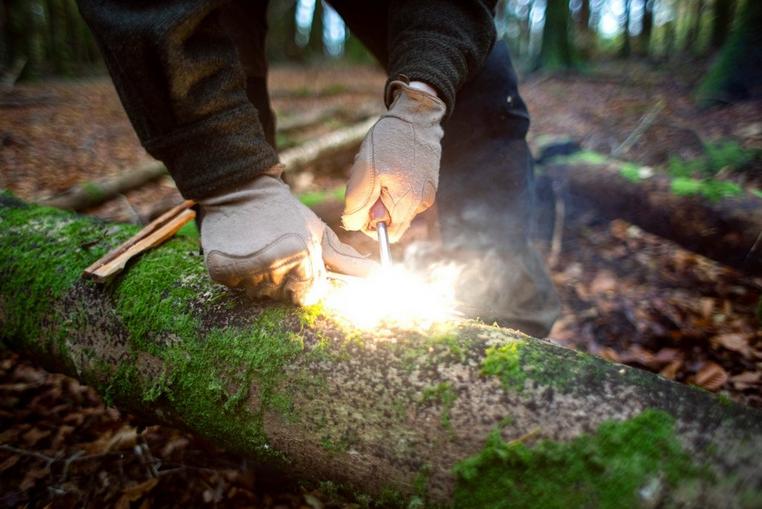
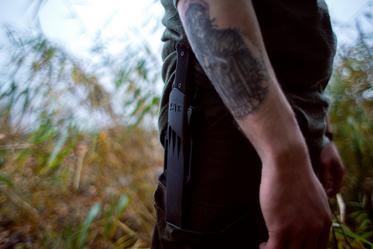


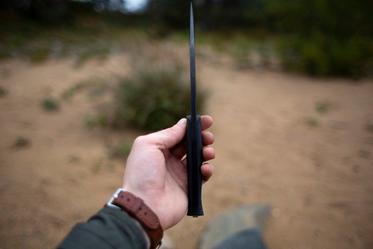
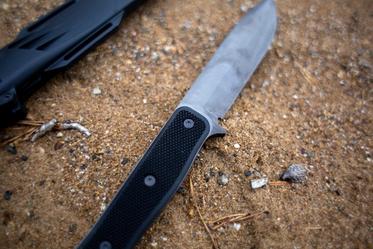
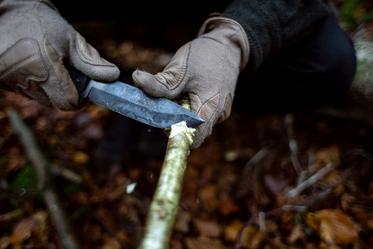
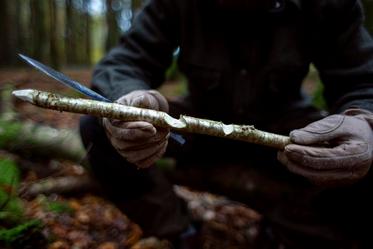






?%24center=center&%24poi=poi&%24product-image%24=&fmt=auto&h=500&poi=%7B%24this.metadata.pointOfInterest.x%7D%2C%7B%24this.metadata.pointOfInterest.y%7D%2C%7B%24this.metadata.pointOfInterest.w%7D%2C%7B%24this.metadata.pointOfInterest.h%7D&scaleFit=%7B%28%24this.metadata.pointOfInterest%29%3F%24poi%3A%24center%7D&sm=c&w=1208)




